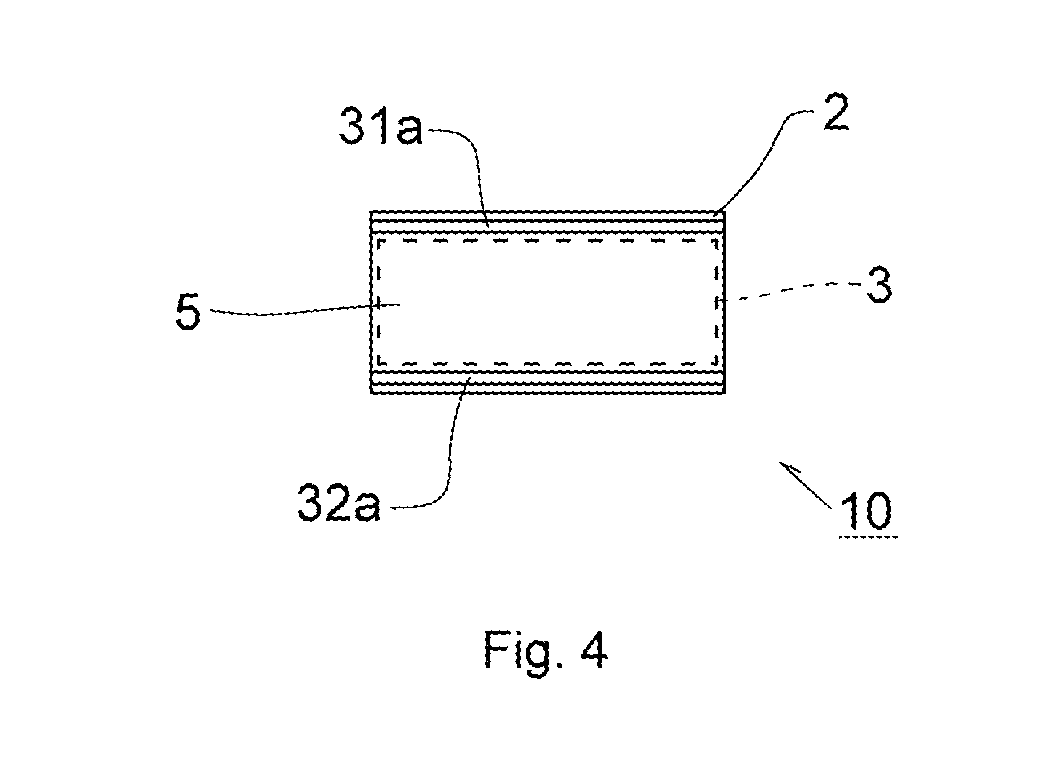Method for producing organic electroluminescence device
- Summary
- Abstract
- Description
- Claims
- Application Information
AI Technical Summary
Benefits of technology
Problems solved by technology
Method used
Image
Examples
example 1
[0139]In Example 1, as a supporting substrate, the above-mentioned metal sheet-containing substrate was used, and as a sealing substrate, the above-mentioned resin sheet-containing substrate was used. The coefficient of linear thermal expansion of the metal sheet-containing substrate is smaller than that of the resin sheet-containing substrate. Accordingly, in Example 1, the supporting substrate is a substrate having smaller coefficient of linear thermal expansion, and the sealing substrate is a substrate having larger coefficient of linear thermal expansion.
[0140]In this way, an organic EL device was prepared using a production device illustrated in FIG. 5.
(Element-Forming Step)
[0141]A belt-shaped metal sheet-containing substrate (40 mm in width, 100 m in length) wound into a roll was fed out and introduced to the element forming section B. On an insulating layer of the metal sheet-containing substrate, an Al layer with a thickness of 100 nm as a first electrode, and among organic ...
example 4
[0149]In Example 4, as a supporting substrate, the above-mentioned resin sheet-containing substrate was used, and as a sealing substrate, the above-mentioned metal sheet substrate was used. The coefficient of linear thermal expansion of the metal sheet substrate is smaller than that of the resin sheet-containing substrate. Accordingly, in Example 4, the supporting substrate is a substrate having a larger coefficient of linear thermal expansion, and the sealing substrate is a substrate having a smaller coefficient of linear thermal expansion.
[0150]A production device illustrated in FIG. 5 was used to prepare an organic EL device.
(Element-Forming Step)
[0151]A belt-shaped resin sheet-containing substrate (40 mm in width, 100 m in length) wound into a roll was fed out and introduced to the element forming section B. On a barrier layer of the resin sheet-containing substrate, an ITO with a thickness of 100 nm was formed as a first electrode by a sputtering method. On this first electrode...
PUM
 Login to View More
Login to View More Abstract
Description
Claims
Application Information
 Login to View More
Login to View More - R&D
- Intellectual Property
- Life Sciences
- Materials
- Tech Scout
- Unparalleled Data Quality
- Higher Quality Content
- 60% Fewer Hallucinations
Browse by: Latest US Patents, China's latest patents, Technical Efficacy Thesaurus, Application Domain, Technology Topic, Popular Technical Reports.
© 2025 PatSnap. All rights reserved.Legal|Privacy policy|Modern Slavery Act Transparency Statement|Sitemap|About US| Contact US: help@patsnap.com



